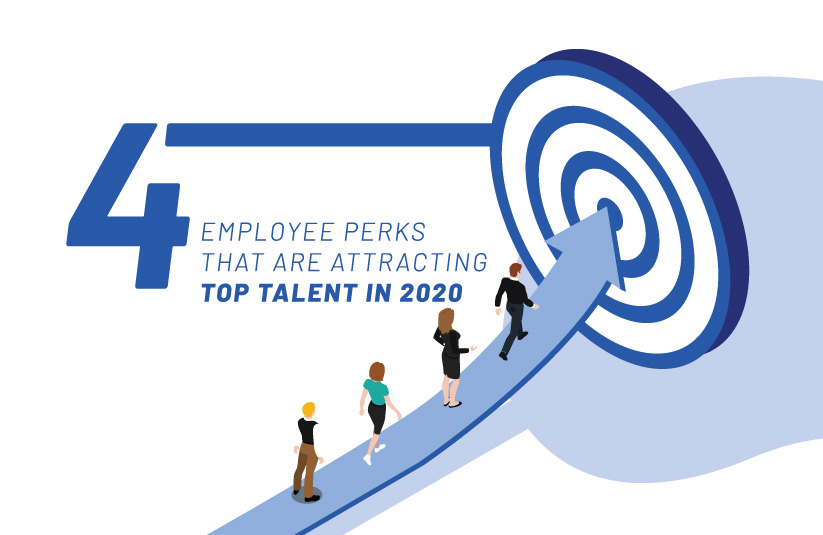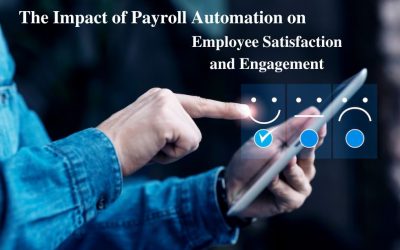Innovative Employee Perks
The modern-day workplace—a concept that has been continuously evolving since the integration of the internet. Long gone are the days of the traditional nine-to-five, formal business wear, and even watercooler talk (because let’s face it—gifs really get the point across). As workplace traditions expand and transform, the benefits that top recruits search for do too.
If your company hasn’t taken a deep dive into evaluating your employee benefits recently, now is the time to do so. Below, we’ve compiled some of the biggest perks today’s top candidates look for when searching for the ideal place to grow their careers.
1. Work from Home and Flexible Hours
Today’s workplaces are truly quite advanced. Many workers can now perform the majority of their job duties from a laptop, without being physically present in the office. Much of today’s top recruitment in the workforce is tech-savvy and places great value on work-life balance, making regular remote work or work-from-home abilities and flexible hours a huge selling point.
Organizations that have not yet built their remote infrastructure should begin to consider it’s wide range of benefits. Not only is this way of work becoming the norm for businesses across the globe, but it has become a unique way to attract and retain the best of the best. Additionally, accommodating remote work allows you to hire from outside of your office’s geological location and recruit top talent from anywhere in the world.
Providing opportunities to work remotely from home or from anywhere, for that matter, really shows employees that the company is invested in their well-being and has a genuine desire to create a true work-life balance. To set up the infrastructure to be able to accommodate remote work, a company must consider the following:
- Can we provide each employee with the necessary resources such as laptops?
- Do we have the internal communication capabilities to keep things streamlined (ex: company-wide access to platforms like Slack or Zoom)?
- Can human resources establish comprehensive guidelines and expectations for working remotely?
- How can we hire employees outside of our central location and still keep them engaged in company culture and feeling like part of the team?
2. Casual Dress Code
Thanks to the recent influence of “start-up culture,” suits, pencil skirts, and blazers have become a thing of the past. Now, it’s not unusual to see CEO’s come to work in jeans and a t-shirt. Even Goldman Sachs announced last year that they were rolling out a newly relaxed dress code policy. What prompted such a change? More than 75 percent of Goldman Sachs employees are of the millennial or Gen Z generation (born after 1981).
3. Identify Employees with Critical Skills
A 2017 survey found that nearly 60 percent of Employee perks, millennials and Gen Z especially, prefer to wear more casual clothing at work. Why? Well, first and foremost, it saves employees money. Formal business attire tends to fall on the more expensive side—not to mention the additional cost of regular dry cleanings. Plus, casual and relaxed clothing allows the employee to focus on the task at hand instead of how uncomfortable they feel in something that doesn’t naturally represent who they are.
However, an informal dress code is not the same as “no dress code.” When implementing this new aspect of your company’s culture, have an updated dress code policy published and ready to distribute to all employees that addresses the obvious, like no pajamas or sweatpants, clothing that reveals cleavage or midriffs, or anything with holes and rips, for example.
4. Wellness Benefits
Employee perks extend beyond materialistic items like smart devices and clothing. That said, the standard health insurance, dental, and vision coverage are necessary offerings when hiring new talent, of course, but today’s top recruits want to know what else you’re doing to ensure their wellness for years to come.
Many companies are beginning to realize the advantages of providing mental health services to their employees through better mental health coverage in their insurance offerings or even through employee assistance programs (EAPs). The understanding and support from one’s employer in regards to feelings of anxiety and depression have led to improved work performance and lower rates of absenteeism, meaning that participating employers see considerable gains in retention and productivity amongst their staff.
Mental health, however, is only one part of a three-part equation. For maximum retention and productivity, employees are looking for assistance with their overall health—diet and exercise included. It doesn’t mean employers have to build a gym facility and smoothie bar on the premises (though some businesses have), but instead, consider where else you can provide fitness and nutrition assistance within your benefits package.
Businesses with only local employees may consider partnering with nearby fitness clubs to provide discounted or company-sponsored memberships to encourage employees to keep active and physically fit. On the same note, many offices make a budget for supplying their breakroom full of fruits and veggies as a healthy snacking option for their employees throughout the day. For organizations with remote employees, partnering with a local facility may leave a wide portion of employees feeling excluded. In this instance, providing a stipend for a fitness center nearest them or a digital wellness solution like an app-based weight loss program can ensure accessibility for everyone.
The importance of diet and exercise in employees is truly paramount to overall retention and success. It may seem obvious that a proper diet and regular exercise would undoubtedly lead to a happier, healthier, and more productive workforce, but the actual numbers are alarming. A study published in the Population Health Management journal found that poor nutrition is linked to an increased risk of loss of productivity by a staggering 50-66 percent when it comes to lack of exercise alone.
In this non-stop, “go-go-go” state of the world, it’s not uncommon for employee perks to put the needs of their job and even their families before their own health and wellbeing. It’s safe to conclude that companies who spend additional time and money to provide their employees with the resources needed to maintain optimal health will see their investments pay off through increased employee loyalty, retainment, productivity, in addition to an overall happier and more positive company culture.












